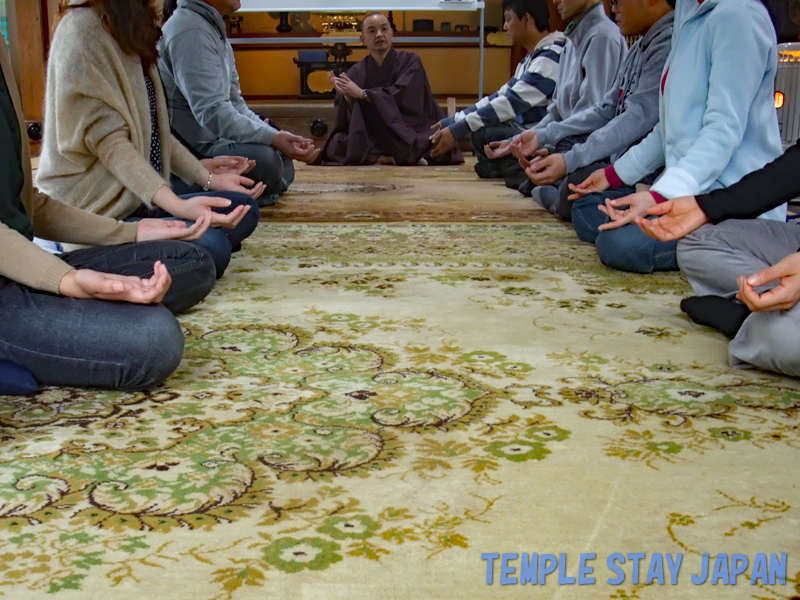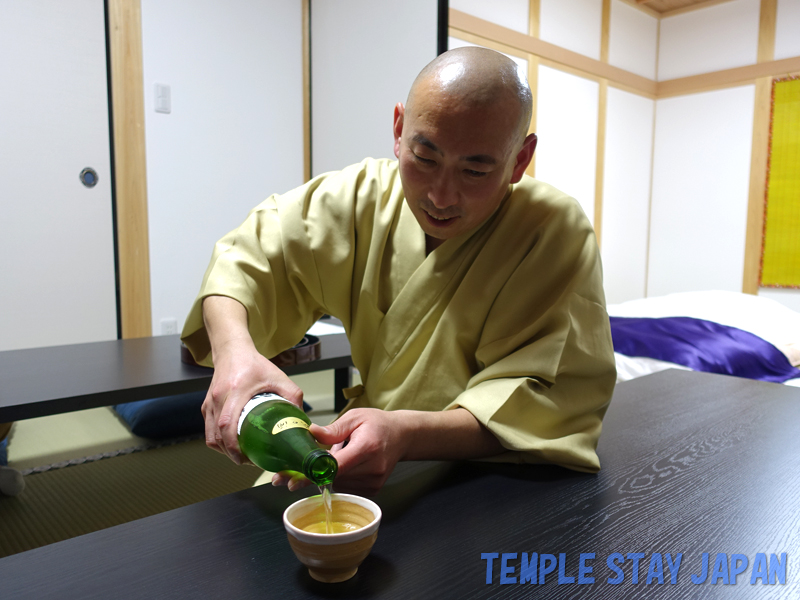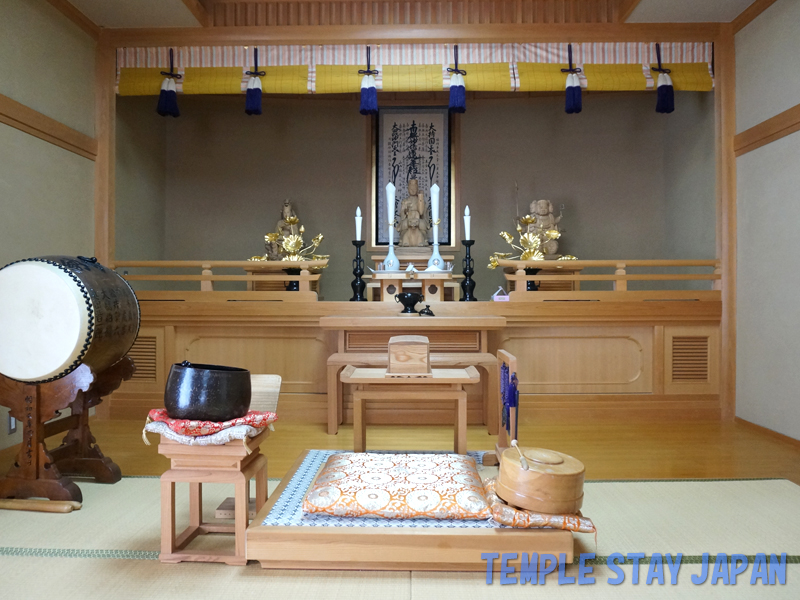Chugoku– category –
-

Mangyoji temple stay (Yamaguchi)
Mangyoji Temple was built in this place in 1605. Nearby is the city of Hagi, where many important figures in Japan's modernization were born. Guest room was a beautiful Japanese-style room with a painted tokonoma alcove. I had the opportunity to attend religious services in the main hall and copy sutras. -

Aki-Kokubunji temple stay (Hiroshima)
Aki-Kokubunji is a historic temple built before 750 AD. There is a lodging facility on the temple grounds. Guests can also try out zazen, copying sutras and goma fire rituals. -

Syokinkan temple stay (Shimane)
Shokinkan is located along the approach to Yasugi-Kiyomizudera Temple. It is a long-established store founded in 1869. I haven't stayed here yet, but I had the Buddhist vegetarian cuisine. Yasugi Kiyomizudera Temple is famous for its imitation squid. It has a chewy texture and I ate it with wasabi and soy sauce. -

Koyokan temple stay (Shimane)
Yasugi Kiyomizu-dera Temple was founded in 587. The Koyokan was located at the back of the approach to Yasugi-Kiyomizudera Temple. The building and entrance had a time-honoured air about them. The greatest pleasure at Koyokan is the Buddhist vegetarian cuisine. After checking out, I tried out Zen meditation. -

Ichibatasan-Cottage temple stay (Shimane)
Ichibata-Yakushi is the head temple of the Ichibata-Yakushi sect and has long been said to have the power to cure eye diseases. There were two cottages in the grounds of Ichibata-Yakushi. Services were held in the main hall at 4:30 in the evening and 7:30 in the morning. I also participated in Zen meditation. -

Zizoin temple stay (Tottori)
Jizoin Temple was founded in 756. The principal image is a large statue of Jizo Bodhisattva, measuring 358.6cm (11.77ft).The shukubo has three guest rooms. There are no meals provided, only lodging. You can do things like copying sutras, copying Buddha images, and making prayer beads. -

Sanrakuso temple stay (Tottori)
Sanrakuso is a shukubo for Kanshoin Temple, one of the sub-temples of Daisenji Temple. This shukubo has a history of over 350 years. Since it was autumn, the meal consisted of Buddhist vegetarian cuisine centered around mushrooms. I copied the sutras at night. -

Kotakuji temple stay (Tottori)
Kotakuji Temple is said to have been founded in 1592. It is surrounded by rice fields and has a natural environment with mountains in the distance. I attended religious services, meditated, and copied sutras in the main hall. The Buddhist vegetarian cuisine was Italian style. -

Nisonin temple stay (Yamaguchi)
Nisonin Temple, located on the western edge of Honshu (the main island of Japan) , is a temple with 1,200 years of history. I had a meditation session in the main hall. Dinner is buddhist vegetarian cuisine made with local ingredients. After the meal, we had time to chat with the head priest over some drinks. -

Saijyoinari Kenmyokaku temple stay (Okayama)
This is a shukubo of Saijyoinari, one of the three largest Inari shrines in Japan. On the occasion of the separation of Shinto and Buddhism in the Meiji period, the mixed worshipping style of Shinto and Buddhism was allowed here. Shukubo's room I stayed in was a 10 tatami Japanese-style room.
12









